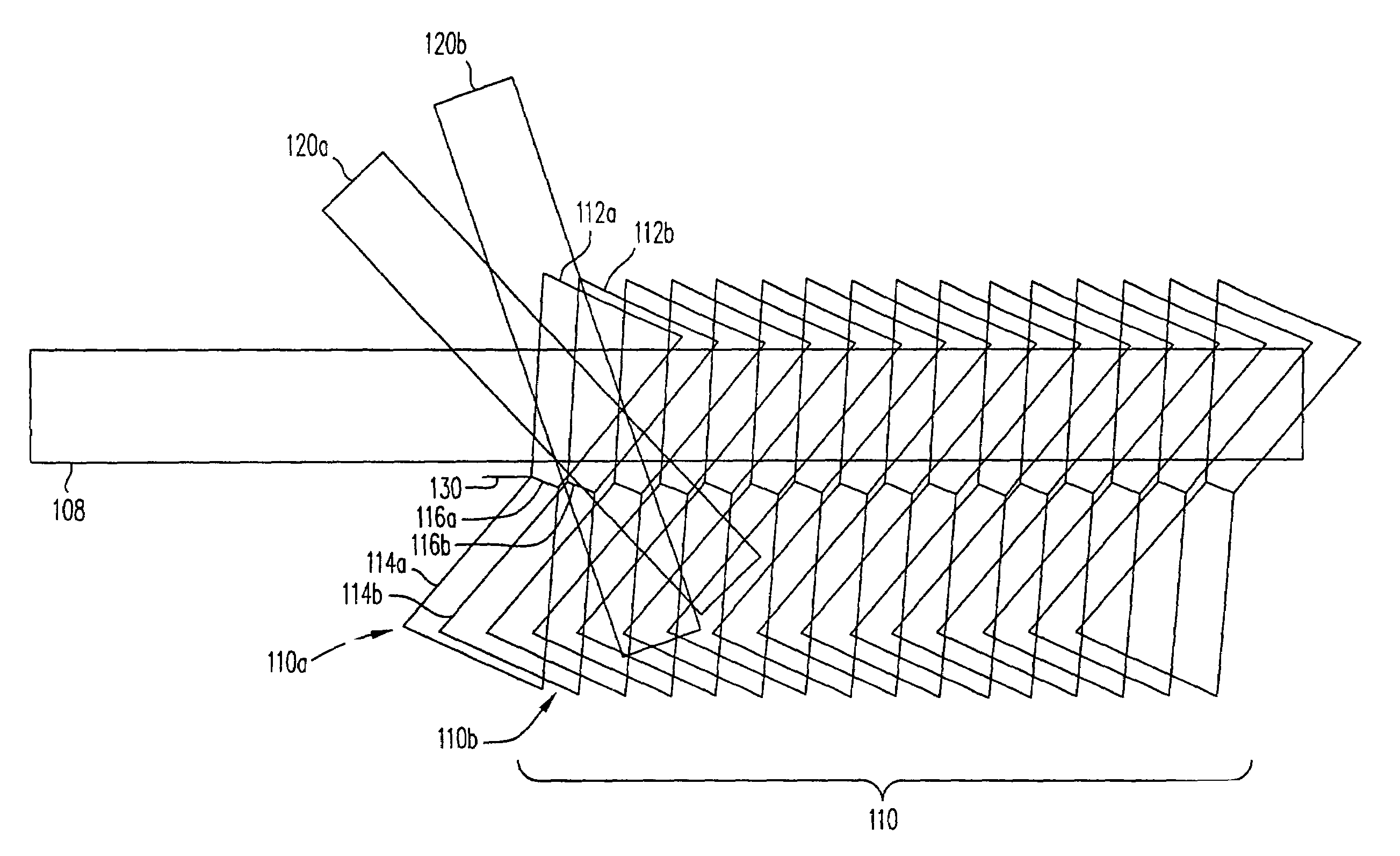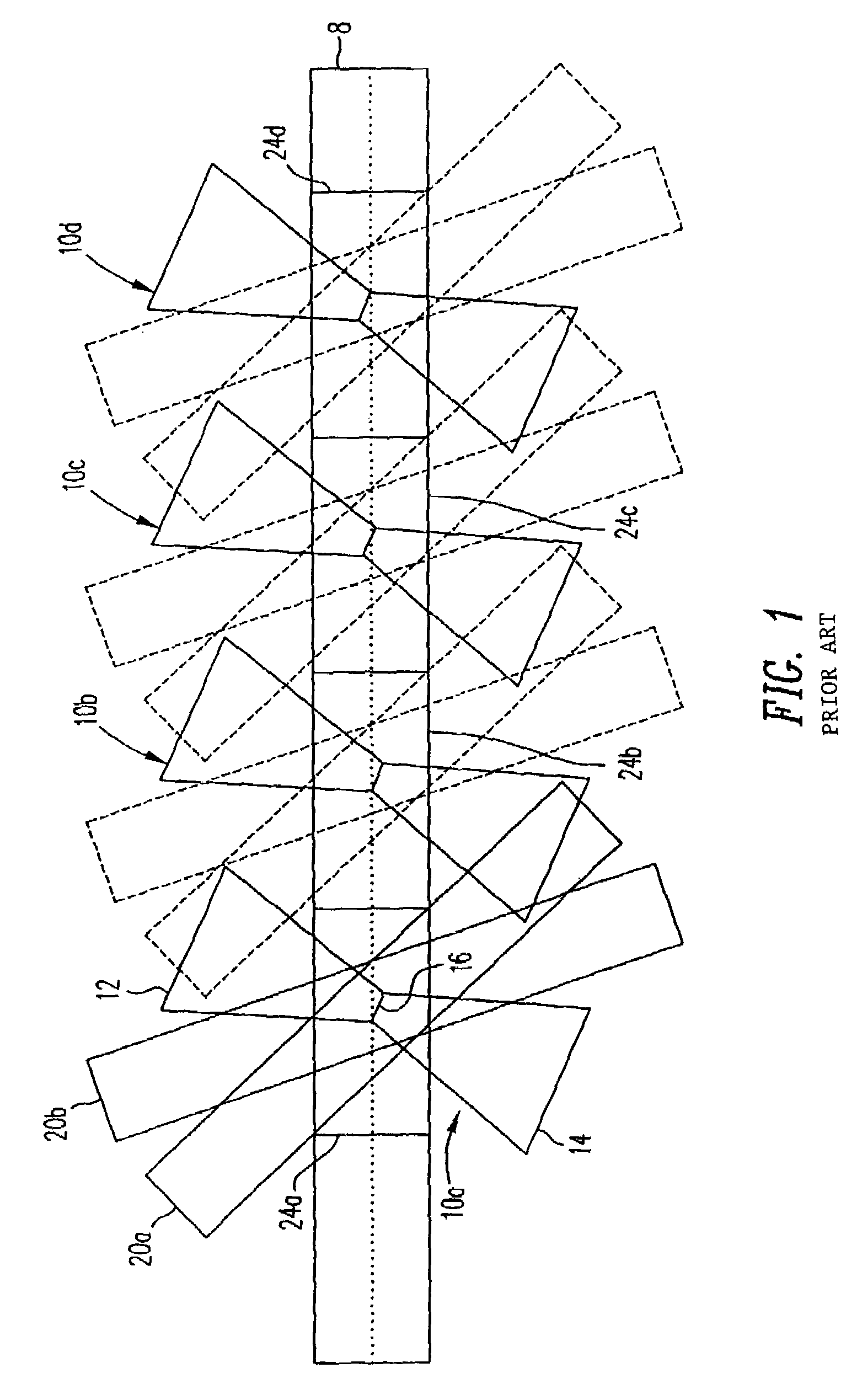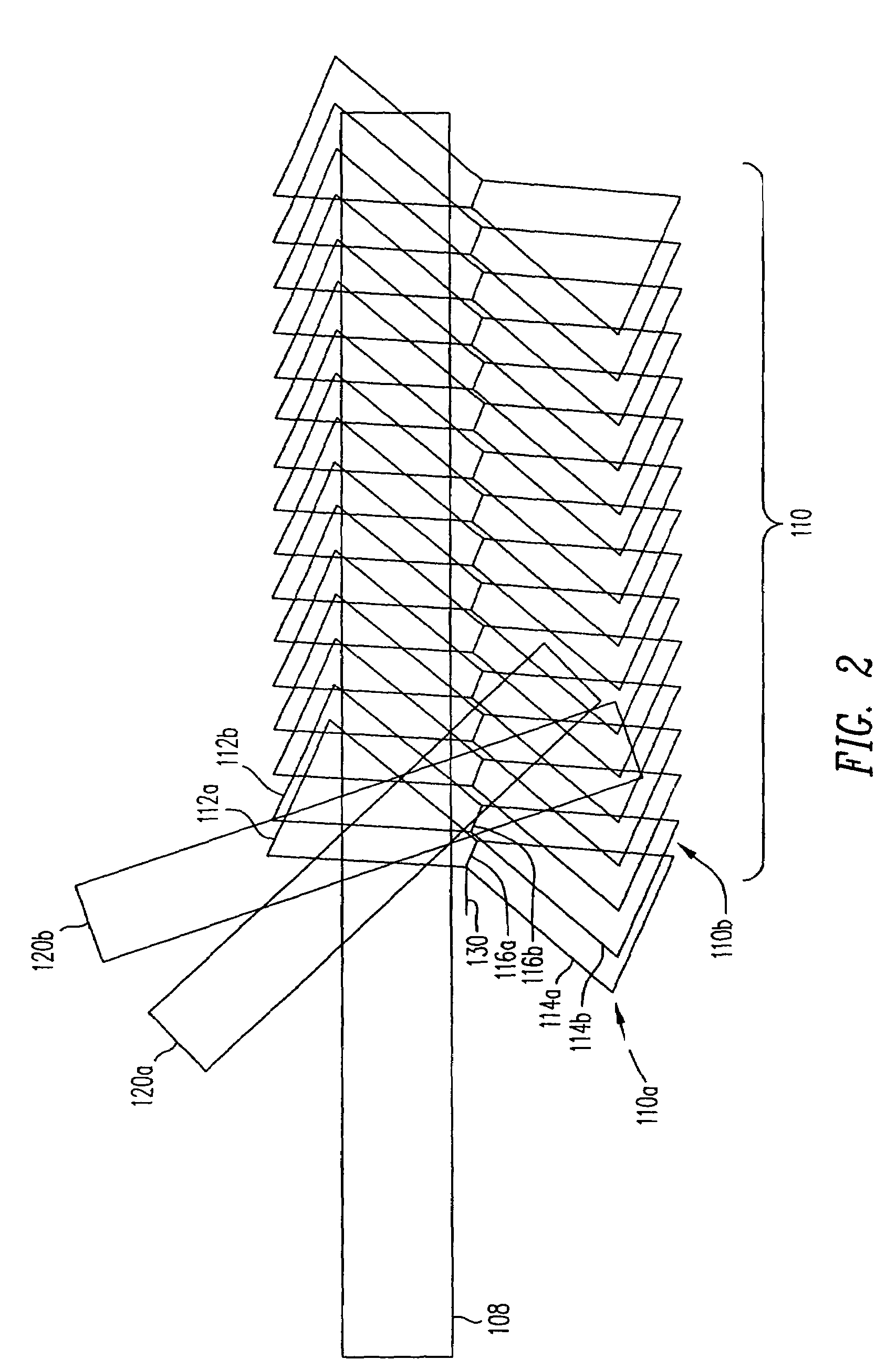Polytopic multiplex holography
a polytopic multiplex and holography technology, applied in the field of polytopic multiplex holography, can solve the problems of limited stack spacing, increased spatial stack size, and limited minimum distance between stacks
- Summary
- Abstract
- Description
- Claims
- Application Information
AI Technical Summary
Benefits of technology
Problems solved by technology
Method used
Image
Examples
Embodiment Construction
[0026]A method of increasing the density of holograms stored in a holographic media in accordance with the present invention is illustrated in FIG. 2. FIG. 2 illustrates a holographic media 108 in which a plurality a holograms are generated by a plurality of signal beams 110. Each of the plurality of signal beams 110 include an incoming converging cone, and outgoing diverging cone and a beam waist. In particular, a first signal beam 110a includes a first incoming converging cone 112a, and a first outgoing diverging cone 114a and a first beam waist 116a. As used herein, the “waist” of a beam can indicate either the beams Fourier transform plane or image plane. In FIG. 2, beam waist 116a can be either the Fourier transform plane or the image plane. FIG. 2 also shows a first reference beam 120a and a second reference beam 120b. As is understood in the art, signal beam 110a and first reference beam 120a can generate a first hologram. A first additional signal beam (not shown) which can ...
PUM
| Property | Measurement | Unit |
|---|---|---|
| Size | aaaaa | aaaaa |
| Transmission | aaaaa | aaaaa |
| Dimension | aaaaa | aaaaa |
Abstract
Description
Claims
Application Information
 Login to View More
Login to View More - R&D
- Intellectual Property
- Life Sciences
- Materials
- Tech Scout
- Unparalleled Data Quality
- Higher Quality Content
- 60% Fewer Hallucinations
Browse by: Latest US Patents, China's latest patents, Technical Efficacy Thesaurus, Application Domain, Technology Topic, Popular Technical Reports.
© 2025 PatSnap. All rights reserved.Legal|Privacy policy|Modern Slavery Act Transparency Statement|Sitemap|About US| Contact US: help@patsnap.com



